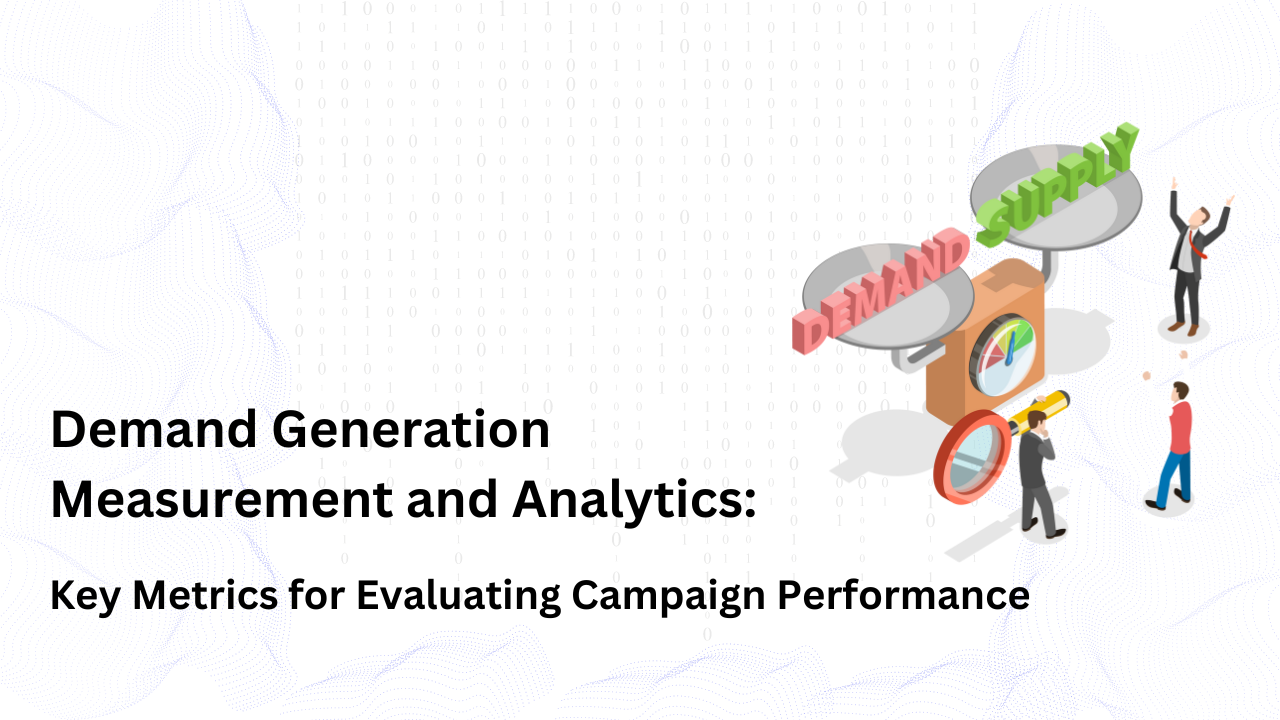Demand Generation Measurement and Analytics: Key Metrics for Evaluating Campaign Performance
In the rapidly evolving world of marketing, demand generation plays a crucial role in driving business growth. However, to ensure the effectiveness of demand generation campaigns, it is essential to measure and analyse their performance using relevant metrics. This article explores the importance of demand generation measurement and analytics and highlights key metrics that businesses should consider when evaluating the performance of their campaigns. By leveraging these metrics, businesses can make data-driven decisions, optimize their strategies, and maximize the return on their marketing investments.
Lead Generation Metrics
Lead generation is a fundamental aspect of demand generation, and several metrics can help evaluate the success of lead generation efforts. These metrics include:
- Total Leads Generated: This metric indicates the overall volume of leads generated during a specific campaign. It provides a benchmark for evaluating campaign success and monitoring lead growth over time.
- Conversion Rate: The conversion rate measures the percentage of leads that successfully convert into qualified prospects or customers. It helps assess the effectiveness of lead nurturing strategies and identify areas for improvement.
- Cost per Lead (CPL): CPL calculates the average cost incurred to generate a single lead. By comparing the CPL against the value of acquired leads, businesses can determine the campaign’s cost-effectiveness.
Engagement Metrics
Engagement metrics provide insights into how well demand generation campaigns are capturing and retaining audience attention. Some key engagement metrics include:
- Click-Through Rate (CTR): CTR measures the percentage of recipients who click on a specific call-to-action or link. It helps gauge the effectiveness of email campaigns, landing pages, and other conversion-focused elements.
- Time Spent on Page: This metric indicates the average amount of time visitors spend on a specific webpage. It helps determine the level of interest and engagement, providing insights into the effectiveness of content and user experience.
- Social Media Engagement: Monitoring metrics such as likes, shares, comments, and retweets on social media platforms provides an indication of audience engagement and the resonance of content with target audiences.
Pipeline Metrics
Pipeline metrics assess the progression of leads through the sales pipeline, providing valuable insights into the overall effectiveness of demand generation efforts. Key pipeline metrics include:
- Marketing Qualified Leads (MQLs): MQLs are leads that have been deemed ready for further engagement by the marketing team. Tracking the number and quality of MQLs helps measure the success of lead nurturing efforts.
- Sales Accepted Leads (SALs): SALs are leads that have been accepted by the sales team as potential opportunities. Monitoring the conversion of MQLs to SALs provides insights into the alignment between marketing and sales efforts.
- Sales Conversion Rate: This metric measures the percentage of leads that convert into paying customers. It helps evaluate the overall effectiveness of demand generation campaigns in driving revenue.
Return on Investment (ROI)
Calculating the ROI of demand generation campaigns is crucial for assessing the financial impact of marketing efforts. ROI helps determine the profitability and effectiveness of campaigns, and it can be calculated by comparing the revenue generated from the campaign against the costs incurred.
In Conclusion, Effective demand generation measurement and analytics are essential for assessing the performance of marketing campaigns and optimizing strategies. By tracking lead generation metrics, engagement metrics, pipeline metrics, and ROI, businesses can gain valuable insights into the effectiveness of their demand generation efforts. This data-driven approach enables businesses to make informed decisions, identify areas for improvement, and drive impactful results. By leveraging these key metrics, businesses can evaluate and enhance the performance of their demand generation campaigns, ultimately driving sustainable growth and success.


